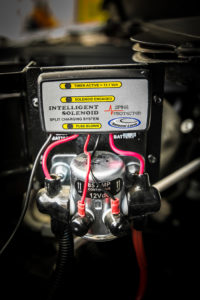
systems, specifically solenoid systems versus DC-to-DC chargers. Before you rush off and make a purchase, we have some advice on split-charging systems.
The debate on which system is best (solenoid or DC-to-DC) has been raging for years. Unfortunately, the subject is shrouded in unsubstantiated opinions and a lack of research. To date, there have been no tests that prove that one system is better than the other.
One possible reason for this is that there are so many variables that such a definitive statement could never be made. The other problem is the unchallenged belief that if something is more expensive, it must automatically performs better. This argument is further supported by the fitment industry, in which many 4×4 “experts” recommend expensive DC-to-DC chargers because the profit margins are higher; and they also make the mistake of assuming that the more expensive option is automatically better.
National Luna has conducted a series of laboratory tests (on a dozen products and options) to determine how each system performs, but the answer is far from conclusive. The biggest problem with determining which split-charging system works best is that the results are based entirely on other influencing factors, such as:
- What battery type is used
- The output characteristics of the alternator
- Your typical driving time
Each of these variables has an impact on how the split-charging system works; therefore, any
statement that says one setup is better than the other would be riddled with generalizations. Let’s look at a typical example:
If the alternator’s output is 13,7 V or more, a solenoid system will generally recharge faster than most DC-to-DC systems. However, over time, the DC-to-DC system will catch up and restore 100 % battery power. But these results will greatly vary according to what type of battery is used.
What’s more, if the supply voltage is below 13,5 V, the results will differ, and (once again) be heavily influenced by the type of battery.
Unfortunately, the above information leads to more questions than answers, and doesn’t help much when it comes to buying a splitcharging system. In addition, most vehicle owners
don’t know the specific output of their vehicle’s alternator. So let’s start with things that you do know – like your budget and typical driving time.
BUDGET
Obviously, this is where all battery considerations start, and your budget relates to two things: the price of the split-charging system, and the price of the battery. All the research and data National
Luna has gathered on split-charging systems points to one fact: The performance of the system is predominately based on the type of battery you buy. It does no good to spend R10 000 on
a split-charging system only to wire it up to an incorrectly matched battery. That said, the desired application also influences your choice of battery.
National Luna’s advice has always been, buy the best battery you can afford! For most people, this will be a Dry Cell, EV Traction battery. This type of battery is considerably more expensive than a flooded (wet-cell) deep-cycle battery, but the performance variation is vast – it would be like comparing the off-road abilities of a Land Cruiser 70 to those of a RAV4.
DRIVING TIME
These days, alternator voltages can vary from one vehicle to the next; but in the interests of simplicity, we can compare the performance of a popular 20-amp DC-to-DC charger to that of a solenoid setup, using a common-case scenario in which:
- A 140-amp dry-cell battery is used
- The vehicle’s alternator delivers a typical output voltage of 13,7 V
- The driving time is six hours or less
DC-to-DC system. The battery was discharged by 110 Ah (close to 80 %). You’ll see that (initially) the solenoid system delivers a much faster recharge rate than the DC-to-DC setup. But over time, the advantages of the solenoid system are reduced, and the DC-to-DC charger starts to take the lead due to a higher final output voltage. From a marketing perspective, the DC-to-DC charger is punted as a superior setup, but from a practical perspective, in this case, the solenoid system dramatically outperforms the 20 A DC-to- DC charger in the first six hours – where it matters.
Realistically, most of us don’t drive for more than six hours every day while we’re on holiday, in which case the solenoid system will generally restore more charge to the battery than a 20-amp DC-to-DC charger. Of course, DC-to-DC chargers with higher current ratings are available, but they tend to come at a significantly higher price. In summary: If the alternator voltage is lower than 13,5 V, the DC-to-DC system becomes favorable, but consequently, as the alternator voltage increases, the performance gain of the solenoid system becomes more apparent.
One way to compare these two systems is to think of the race between the rabbit and the tortoise. The tortoise may win overall, but that’s only when a long-distance comparison is made.
For shorter distances, the rabbit gets there faster. So which system is best? Again, that will depend on your budget and vehicle setup.
But in the opinion of National Luna (based on the example above), your best bet in terms of performance and value for money would be the fitment of an AGM (dry cell) EV traction battery, a low-cost (mechanically bulletproof) solenoid system, and a high-quality 220 V maintenance charger. That setup will ensure the best possible recharge rate, while guaranteeing maximum battery life and performance over time.
This brings us to our final point: no matter what split-charging system you use, we highly recommend the use, and frequent practice, of connecting your auxiliary battery to a 220 V maintenance charger when not in use. Unless you’re driving for very long periods (more than 18 hours), it’s highly unlikely that your auxiliary battery will ever be 100 % recharged – regardless of which split-charging system you use.
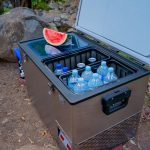
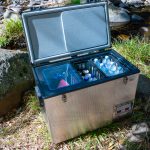
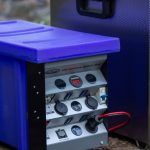
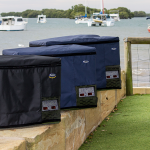
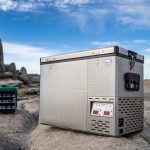
Recent Comments